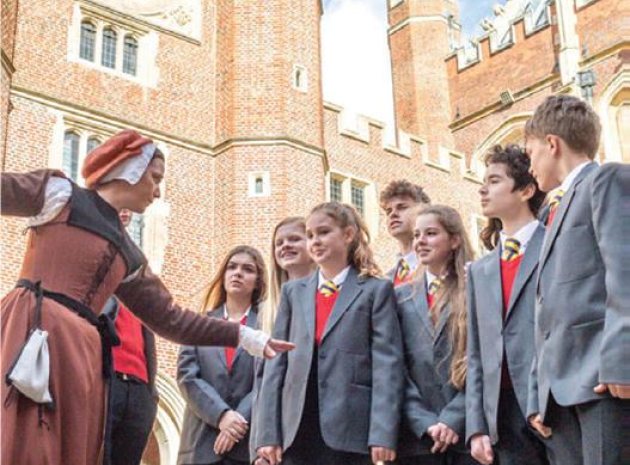School visits to historical sites in the UK are becoming increasingly important to teachers like me who want to bring history lessons to life for the class, and enable pupils to develop a deeper understanding of the people and places that have shaped society today.
Castles, palaces, abbeys, country houses and other historical locations in the UK are now catering for school visits and offer a variety of experiences to bring history alive for the student, at every level of their education.
Visits to sites where the things we learn about in history actually happened can serve as a catalyst for sparking children’s imagination and showing them a world beyond the classroom. A school visit to a historical site can put what I teach in the classroom into context, and many sites offer interactive, hands-on and immersive experiences specifically designed to meet the needs of different groups across the key stages.
For example, over the last couple of years, I have visited several of the Historical Royal Palaces sites with our secondary school students. Our students come from North London but often do not have the opportunity such places outside of school.
Most recently, we visited the Tower of London twice with Year 7, which tied into our scheme of work for Key Stage 3, and Banqueting House with sixth formers and Years 8 and 9.
A popular choice
The visits are incredibly cost effective and link really clearly to what we teach in school. With the Tower of London visits, we split the students into groups and gave them tasks to complete whilst they explored the site. Girls and boys alike absolutely loved learning about the dungeons, torture weapons and famous inmates, as well as the crown jewels. History is a very popular subject at our school; the fact that we can offer students the chance to experience history where it actually happened has been undeniably invaluable.
Not only do the visits help with the students’ overall enjoyment and deeper understanding of the subject, they also encourage them to realise there are a lot of other historical sites in London they can visit for their education, like galleries and museums.
The staff at the Tower of London in particular were fantastic with the students during our visits. They really focused on engaging with them, picking up on what interested them and developing that knowledge with them – they weren’t intimidated by a large bunch of young people, instead they helped them investigate and explore. The students talked about their visit the next day; they really enjoyed it and we tasked them with producing presentations and write-ups of their experience.
A new perspective
The trips to Banqueting House were also very memorable. We took two groups of A level students, aged 16-18, there. The new A-Level states that 50% of history that is taught should be British History, and I am teaching the Stuarts, so I felt that Banqueting House would be the perfect setting to develop their learning about this period in history.
During our visit, the students engaged with a costumed interpreter who was dressed as Charles I which worked really well – the young people got really into it and were able to draw on their knowledge as well as the resources provided to ask him relevant questions, which he answered in character. A highlight was when he delivered his execution speech to the students before leaving the throne room; they were stunned into silence!
Interestingly, the Stuarts visit at Banqueting House changed the way I teach the subject; I definitely saw Charles I as more of a rounded character following our experience, whereas before, I had been tending to paint him in a mostly negative light.
School visits to historical sites are amazing for developing the students’ interest in history as well as their knowledge, and I would highly recommend them to any teacher considering ways to improve delivery of the subject.
About the author
Peter Harris teaches at Bishop Douglass Catholic School, East Finchley.









